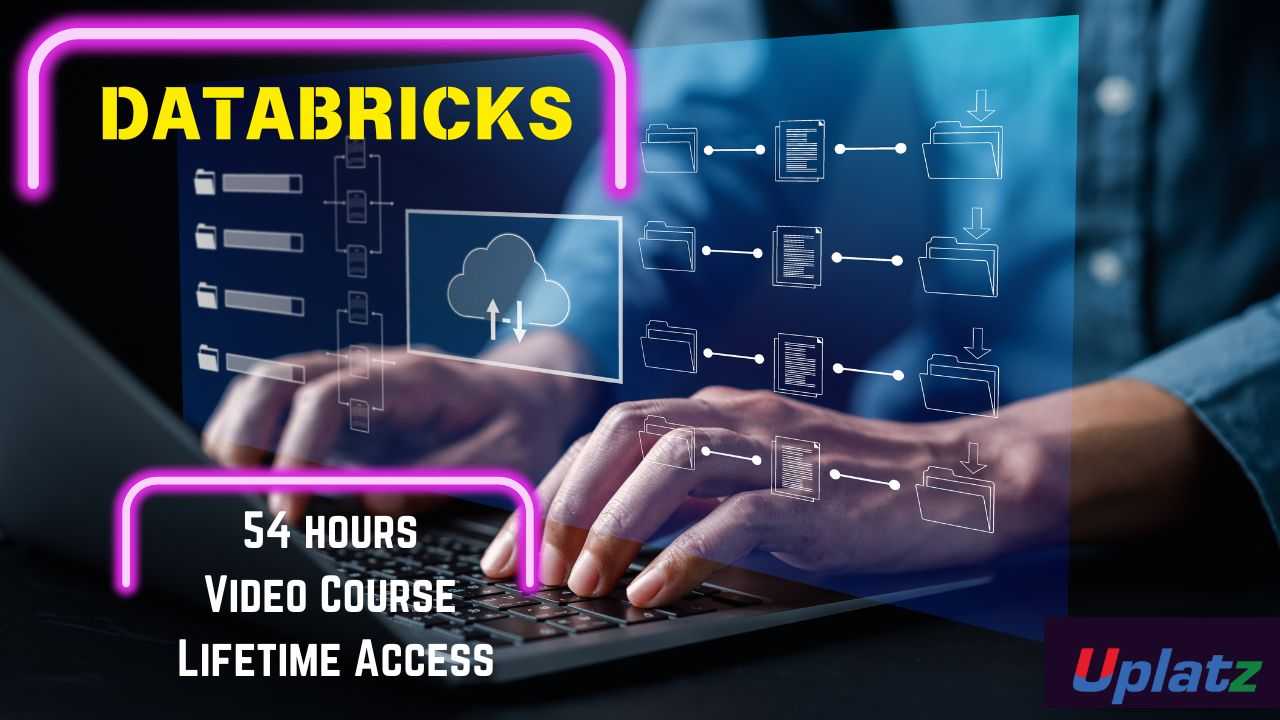Snowflake for Business Intelligence and Analytics Professionals
Master cloud-based data warehousing and analytics with Snowflake—ideal for BI professionals, analysts, and data engineers.Preview Snowflake for Business Intelligence and Analytics Professionals course
Price Match Guarantee Full Lifetime Access Access on any Device Technical Support Secure Checkout Course Completion Certificate 92% Started a new career
BUY THIS COURSE (
92% Started a new career
BUY THIS COURSE (GBP 12 GBP 29 )-
 100% Got a pay increase and promotion
100% Got a pay increase and promotion
Students also bought -
-

- Data Engineering with Talend
- 17 Hours
- GBP 12
- 540 Learners
-

- Databricks for Cloud Data Engineering
- 54 Hours
- GBP 12
- 1379 Learners
-

- Career Accelerator - Head of Data, Analytics, and Machine Learning
- 200 Hours
- GBP 32
- 650 Learners

Snowflake – Self-Paced Online Course
In the age of data-driven decision-making, the ability to work efficiently with cloud-native data platforms is essential for professionals across business intelligence, analytics, and data engineering. The Snowflake – Self-Paced Online Course has been expertly crafted to provide learners with an in-depth, practical education in one of the most advanced cloud data warehousing solutions available today: Snowflake.
This flexible, on-demand course is designed for a wide range of professionals—from data analysts and BI developers to data engineers and technical team leads—who want to elevate their skills in modern data architecture and cloud analytics. By learning Snowflake, participants gain access to a powerful, scalable, and fully managed platform that is revolutionizing how organizations store, process, and share their data.
What Makes Snowflake Unique?
Snowflake is a cloud-based data platform built from the ground up for performance, scalability, and simplicity. Unlike traditional databases, Snowflake is designed for the cloud and operates on a multi-cluster, shared-data architecture. It seamlessly supports structured and semi-structured data formats such as JSON, Avro, Parquet, and XML. Its standout features—such as near-infinite scalability, separation of compute and storage, zero management overhead, and secure data sharing—make it a favorite among modern data teams and enterprises seeking agility and efficiency in their analytics ecosystems.
This course helps demystify the platform and arms you with the hands-on skills and conceptual understanding required to fully utilize Snowflake’s capabilities in real-world business environments.
Course Overview
The Snowflake – Self-Paced Online Course is built around high-quality video lectures, interactive hands-on labs, and guided exercises that walk you through the Snowflake platform step-by-step. You’ll begin with foundational topics such as Snowflake’s architecture and key components, and progress to advanced skills such as performance tuning, data transformation with SQL, and secure data sharing across cloud environments.
Each lesson is taught by seasoned professionals with real-world experience implementing and managing Snowflake environments. This means that you're not just learning theoretical concepts—you’re gaining actionable skills that are directly applicable to real-world projects.
Throughout the course, learners explore how to:
- Load and manage large volumes of data efficiently
- Design and optimize data pipelines
- Implement best practices in storage and compute usage
- Secure sensitive data and manage access controls
- Share data across teams and organizations without data duplication
Real-life case studies and examples are included to make learning more contextual and help you understand the "why" behind every feature and technique.
How to Use This Course Effectively
To gain the maximum value from this self-paced online course, we recommend a structured approach to your learning journey:
- Plan Your Learning Schedule: One of the greatest advantages of a self-paced course is flexibility. Set weekly goals for completion, such as covering 2–3 topics per week, depending on your availability and experience level. This helps you stay consistent without feeling overwhelmed.
- Engage Actively with Video Lectures: Each video is packed with rich insights, visual explanations, and walkthroughs. Watch them with focus, and make notes on key terms, Snowflake functions, and architecture principles. Use pause and rewind features liberally—some topics, like multi-cluster architecture or data cloning, may need more than one pass to fully grasp.
- Hands-On Labs Are Crucial: The practical lab exercises provided are designed to simulate real-world tasks. Ensure that you perform these in a Snowflake trial or sandbox environment. Practice will solidify your understanding and boost your confidence when it comes time to implement similar tasks at work.
- Apply What You Learn in Context: If you're currently working in a data-related role, try mapping what you learn to your own projects. Can you replicate a workflow or optimize an existing pipeline using Snowflake? Real-world experimentation will deepen your expertise.
- Use the Real-World Scenarios: The course includes examples and business scenarios where Snowflake can be applied. Before reviewing the solutions, challenge yourself to tackle these scenarios on your own. This active problem-solving will test your critical thinking and reinforce key concepts.
- Join Learning Communities (if available): Many online learning platforms provide access to discussion boards, learner groups, or Slack communities. Use these resources to ask questions, share tips, and connect with other Snowflake learners and experts.
- Track Your Progress: After every module, spend a few minutes reflecting on what you’ve learned. Jot down summaries, take screenshots of configurations, or create a personal “cheat sheet” of Snowflake commands and best practices.
- Revisit Key Concepts Before Certification or Implementation: Whether you're preparing for a Snowflake certification or getting ready to deploy a production environment, reviewing the course materials and labs can serve as a powerful refresher and ensure you're ready for success.
Who Should Take This Course?
This course is designed for a broad audience, including:
- Data Analysts and Business Intelligence Professionals: Learn how to query and analyze data at scale using Snowflake’s SQL capabilities.
- Data Engineers and Architects: Master the design of scalable and high-performance data pipelines in the cloud.
- BI Developers and ETL Specialists: Get familiar with Snowflake’s integration with various BI and ETL tools and optimize your data transformation workflows.
- IT Managers and Technical Leads: Gain a deep understanding of Snowflake’s architecture and governance features to guide enterprise adoption.
Whether you’re transitioning from traditional data warehousing solutions or starting your journey in cloud analytics, this self-paced Snowflake course is your trusted guide. By the end of the course, you’ll be well-equipped to build, optimize, and manage sophisticated data solutions using one of the most innovative platforms in the market.
With hands-on training, expert instruction, and a flexible learning format, this course puts the power of Snowflake in your hands—on your schedule.
Course/Topic 1 - Course access through Google Drive
-
Google Drive
-
Google Drive
By the end of this course, learners will be able to:
- Understand the fundamentals of data warehousing and cloud computing with Snowflake.
- Set up and navigate the Snowflake platform and user interface.
- Create and manage databases, schemas, tables, and virtual warehouses.
- Load structured and semi-structured data using various methods and stages.
- Optimize performance using clustering, caching, and multi-cluster scaling.
- Share and secure data with Snowflake's access control and sharing models.
- Utilize Snowflake features like Time Travel, Failsafe, and Zero Copy Cloning.
- Transform and analyze large volumes of data using SQL and metadata.
- Implement role-based access control and resource monitors.
- Integrate Snowflake with BI tools, cloud storage, and CI/CD pipelines.
Snowflake Course Syllabus
Section 1: Introduction to Snowflake
- Understanding data warehousing in the cloud
- The evolution and key use cases of Snowflake
Section 2: Getting Started
- Signing up and navigating the Snowflake UI
- Creating databases, schemas, and tables
- Loading initial data and using SnowSQL or Web UI tools
Section 3: Virtual Warehouses
- Provisioning and scaling compute resources
- Auto-suspend, auto-resume, and multi-cluster warehouse policies
Section 4: Architecture and Pricing
- Snowflake’s decoupled compute-storage architecture
- Supported platforms and region availability
- Editions and pricing models explained
Section 5: Structured Data Loading
- Data ingestion methods and best practices
- Using internal/external stages and loading with Snowpipe
Section 6: Semi-Structured Data
- Loading and analyzing JSON, ORC, and Parquet data
- Integrating S3 and using FLATTEN with VARIANT columns
Section 7: Transformations and Staging
- Data transformations during ingestion
- Using metadata and staged file queries
Section 8: Managing Objects
- Temporary, transient, and permanent tables
- Views, materialized views, and table design principles
Section 9: Time Travel and Cloning
- Using Time Travel to recover data
- Zero Copy Cloning and its benefits
- Failsafe and storage optimization
Section 10: Performance Optimization
- Query performance tuning and caching
- Using clustering keys and query profiling
Section 11: Secure Data Sharing
- Secure sharing with Snowflake and non-Snowflake users
- Schema and database-level sharing techniques
Section 12: Access Control
- Understanding Snowflake’s RBAC model
- Creating custom roles and managing privileges
Section 13: Advanced Features
- Using streams and tasks for automation
- Building UDFs, procedures, and implementing security at the row/column level
After completing this Snowflake course, learners will be awarded a Course Completion Certificate from Uplatz, demonstrating their proficiency in Snowflake data warehousing, analytics, and cloud-based data operations.
This certificate can significantly enhance your professional credibility as a data engineer, BI analyst, or cloud data architect.
Snowflake expertise is in high demand as companies migrate to cloud-based data warehouses for modern analytics and BI.
Job Roles You Can Pursue:
- Snowflake Developer
- Data Engineer
- BI/Data Analyst
- Data Warehouse Architect
- Cloud Data Consultant
- ETL Developer (Cloud)
Industries Hiring Snowflake Professionals:
- Finance & FinTech
- Retail & eCommerce
- Healthcare & Pharma
- Technology & SaaS
- Logistics & Manufacturing
- Media & Entertainment
- What is Snowflake and how does it differ from traditional data warehouses?
Snowflake is a fully managed cloud data warehouse with a unique architecture that separates compute from storage. - What are virtual warehouses in Snowflake?
They are compute clusters used to execute queries independently of storage. - Explain Time Travel in Snowflake.
Time Travel allows users to access historical data up to a retention period and restore dropped objects. - What is Zero Copy Cloning?
It allows you to create a copy of data without physically duplicating the storage, saving cost and time. - How does Snowpipe help in data ingestion?
Snowpipe allows real-time, continuous data loading into Snowflake from internal or external stages. - What are Snowflake roles and why are they important?
Roles define access control in Snowflake using RBAC. Predefined roles include SYSADMIN, SECURITYADMIN, and ACCOUNTADMIN. - What types of tables exist in Snowflake?
Snowflake supports temporary, transient, and permanent tables based on use case and retention requirements. - How does Snowflake support semi-structured data?
It natively supports JSON, Avro, ORC, Parquet, and XML using the VARIANT data type. - What is the function of clustering in Snowflake?
Clustering improves performance by organizing data logically, allowing faster retrieval. - Can Snowflake be used across multiple cloud platforms?
Yes. Snowflake supports deployment on AWS, Azure, and Google Cloud.









